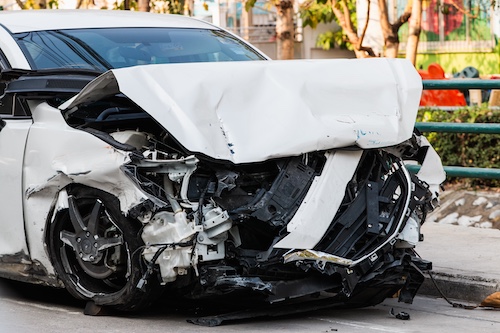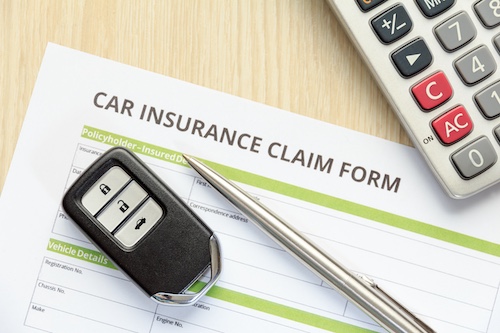Proving Fault in South Carolina Car Accidents
Proving fault in South Carolina car accidents is essential for recovering damages and making sure the responsible party is held accountable. Understanding the legal standards, the role of insurance companies, and the evidence needed can help you secure fair compensation for your injuries and property damage.
In this blog, we explain how to prove fault in a South Carolina car accident, what evidence to gather, and how working with an experienced Beaufort car accident attorney can help you recover damages and protect your rights.
Understanding South Carolina’s Fault System
In South Carolina, proving fault in car accidents is critical for recovering damages and holding the responsible party accountable.
At-Fault System in South Carolina
South Carolina uses an at-fault system for car accident claims. This means the driver who caused the accident is responsible for the damages. Insurance companies look at police reports, witness statements, and other evidence to decide who is at fault.
Modified Comparative Negligence Rule
South Carolina follows a modified comparative negligence rule under S.C. Code § 15-38-15. If you are found partially at fault, your compensation is reduced by your percentage of fault. For example, if you are 20 percent at fault, your compensation is reduced by 20 percent. You cannot recover damages if you are more than 50 percent at fault.
Reasonably Prudent Person Standard
South Carolina courts use the reasonably prudent person standard to evaluate fault. This standard asks what a reasonable driver would have done in similar circumstances. If a driver failed to act as a reasonable person would, they can be considered negligent.
Importance of an Experienced Car Accident Attorney
A skilled car accident attorney can help you prove fault in South Carolina car accidents. They know how to gather valuable evidence and present a strong case. They can also deal with insurance companies to help you seek compensation for medical costs, lost wages, and vehicle damage.
Types of Evidence Crucial in Determining Fault
Collecting the right evidence is key for proving fault in South Carolina car accidents and seeking fair compensation.
Police Accident Report
A police accident report provides an official record of the crash. It includes details about the drivers involved, witness statements, and the officer’s observations. Insurance companies and courts use this report to determine who caused the accident.
Witness Statements
Witness statements can support your version of the accident. They give independent accounts of what happened and can confirm important facts. Your car accident attorney will use these statements to strengthen your claim.
Medical Records and Bills
Medical records and bills show the injuries you suffered in the car accident. They help prove that the other driver’s actions directly caused your injuries. These documents are essential when seeking compensation for medical costs and pain and suffering.
Traffic Camera and Video Footage
Traffic camera footage and video footage from nearby businesses or dashcams can show exactly how the accident happened. This visual evidence helps establish fault by providing a clear, unbiased record of the crash.
Skid Marks, Vehicle Damage, and Traffic Signs
Physical evidence like skid marks, vehicle damage, and traffic signs can help prove fault in South Carolina car accidents. These details can show how the accident occurred and support your claim for damages.
Expert Witness Testimony
Expert witnesses, such as accident reconstruction specialists, can explain how the accident happened and who caused it. Their professional opinion can make your case stronger and help you recover fair compensation.
Common Causes of Fault in South Carolina Car Accidents
Understanding the most common causes of car accidents in South Carolina can help you recognize fault and protect your rights after a crash.
Rear-End Collisions
Rear-end crashes happen when one driver fails to stop in time and hits the car in front. In most cases, the driver in the back is at fault for following too closely or not paying attention. These accidents often involve strong evidence like skid marks and vehicle damage.
Running Red Lights and Ignoring Traffic Signs
Drivers who run red lights or ignore traffic signs often cause serious car accidents. These actions are clear breaches of duty and show negligence. Traffic camera footage and witness statements can help prove that a driver ignored a red light or traffic sign.
Distracted Driving and Speeding
Using a phone while driving or speeding are common causes of car crashes in South Carolina. These actions reduce a driver’s reaction time and can lead to serious injuries. A car accident lawyer can use this evidence to show that the other driver failed to act as a reasonably prudent person would.
Multiple Parties and Complex Collisions
Some car accidents involve multiple drivers or chain-reaction crashes. In these situations, determining fault can be harder. An experienced car accident attorney can gather evidence like police accident reports and witness testimony to find the responsible party.
How Insurance Companies Determine Fault
Insurance companies play a major role in deciding who was at fault in a South Carolina car accident. Their determination can impact your claim and your ability to recover damages.
Role of Insurance Adjusters
Insurance adjusters gather information about the accident from several sources. They use the police accident report, witness statements, medical records, and photos of the accident scene to decide who caused the crash. They may also review vehicle damage and traffic camera footage. Their decision influences how much money the insurance company will pay for property damage, medical costs, and other losses.
Working with the Other Driver’s Insurance Company
When you file a claim, you might deal with the other driver’s insurance company. Their main goal is to pay as little as possible. They will look for ways to place some or all of the blame on you. An experienced car accident attorney can handle these conversations. Your lawyer will protect your rights and make sure you do not admit fault or say something that hurts your case.
Importance of Comparative Negligence
South Carolina uses a modified comparative negligence rule to settle car accident claims. It means your compensation can be reduced if you share fault for the crash. For example, if you are 30 percent at fault, your damages are reduced by 30 percent. If you are 51 percent or more at fault, you cannot recover any compensation.
An experienced car accident lawyer can gather strong evidence to show that you were not at fault or that the other driver was mostly to blame. This can help you recover the maximum compensation possible for your injuries and property damage.
Contact an Experienced Beaufort Car Accident Lawyer Today!
If you have been in a car accident and need help proving fault, reach out to our team at McDougall Law Firm today. Our experienced Beaufort car accident attorneys will review your case, gather valuable evidence, and fight for the compensation you deserve.
Contact us at 843-438-4386 for a free claim review today!




